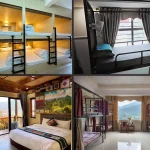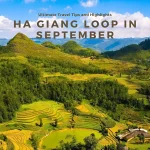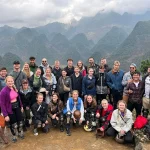Ha Giang, a majestic highland, not only attracts tourists to its wild beauty and rugged mountain landscape but also to its typical four-season climate. This is certainly the ideal destination for those who love nature and exploration. Each season in Ha Giang has its own appeal, from the brilliant flowers in spring to the numbing cold of winter. Below, Karst Plateau will share detailed information about the Ha Giang Loop weather each time, to help you be best prepared when arriving here.
1. Overview of Ha Giang Loop weather

Ha Giang Loop weather is characterized by a tropical monsoon climate
Ha Giang, located in the north of Vietnam, has a temperate monsoon climate, with clear changes according to each season of the year. The Ha Giang Loop weather changes very flexibly, from the freezing cold of winter to the sweltering heat of summer, bringing a different experience to each visitor.
In general, Ha Giang has four main seasons: spring, summer, autumn, and winter, each season has its own beauty and unique climatic conditions. However, due to the complex terrain here, there are differences in climate between regions. The temperature will decrease sharply with altitude, so typical hilly and highland areas such as Dong Van will have harsher weather with an average annual temperature of only about 16 degrees Celsius.
Ha Giang Loop weather has colder winters that last longer than summers with average temperatures of 22 – 24 degrees Celsius, high humidity, and heavy and prolonged rain. It is the above climatic characteristics that have created rich natural scenery, making Ha Giang tourism famous. So every year, many seasonal tours to Ha Giang are set up to help visitors have the opportunity to admire the beauty of the Northwest in style.
2. Seasonal weather
Ha Giang Loop weather not only changes with the seasons but also changes from day to day. Therefore, understanding weather information for each season is very important, especially when you plan a trip to explore the beauty of this land. Ha Giang has four seasons with their own characteristics and attractions, from the romantic beauty of spring, the brilliant scenery of summer, the poetic beauty of autumn to the mysterious beauty of winter. Let’s learn more about each of these seasons to best prepare for your journey.
2.1 Spring (March to May)
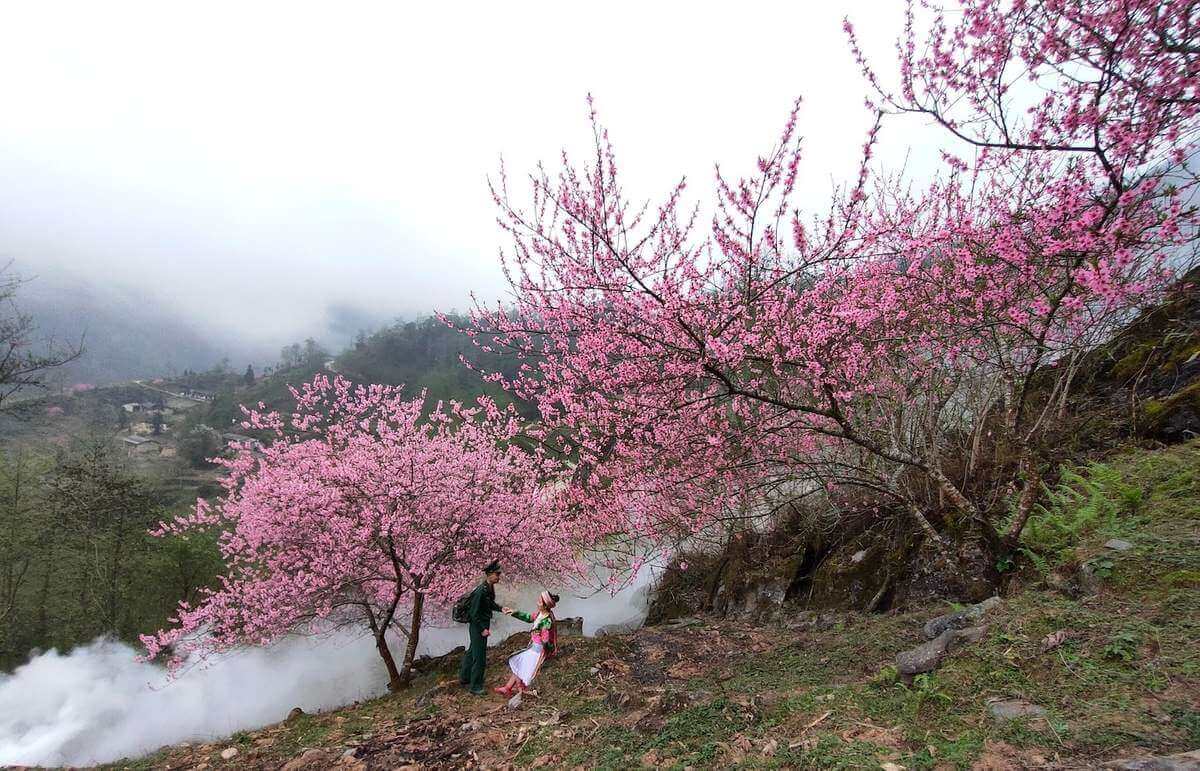
Peach blossoms in Ha Giang have a light, bright pink color, creating a romantic scene amidst majestic nature
When the spring breeze passes, the chilly air gradually gives way to light drizzle, cooling the space. Spring in Ha Giang, from March to May, brings fresh and pleasant air, with temperatures ranging from 22-28°C during the day and dropping to about 12-18°C at night. This is the perfect period for flowers to bloom.
March is the ideal time to admire the blooming peach and plum blossoms, turning Ha Giang into a space filled with pure pink and white. That scene is no different from a beautiful picture of nature, making anyone bewildered when admiring it. In April and May, the weather is warmer, the temperature can increase to about 25-30°C.
Advantage
- Pleasant climate: Warm weather, not too hot or cold, suitable for sightseeing.
- Poetic scenery: Flowers bloom quickly, creating a beautiful natural scenery.
- Convenient transportation: Roads are easier and safer.
Disadvantages
- Light rain: May occur in May, affecting outdoor plans.
- High season: This is the time that many tourists choose to travel.
Tips
- Bring warm clothes: Especially in the evening, when the temperature drops.
- A camera: To capture beautiful moments of blooming flowers and natural scenery.
- Book a hotel room in advance: Spring is also a peak season, when traveling this season, you should book a hotel room in advance.
2.2 Summer (June to August)
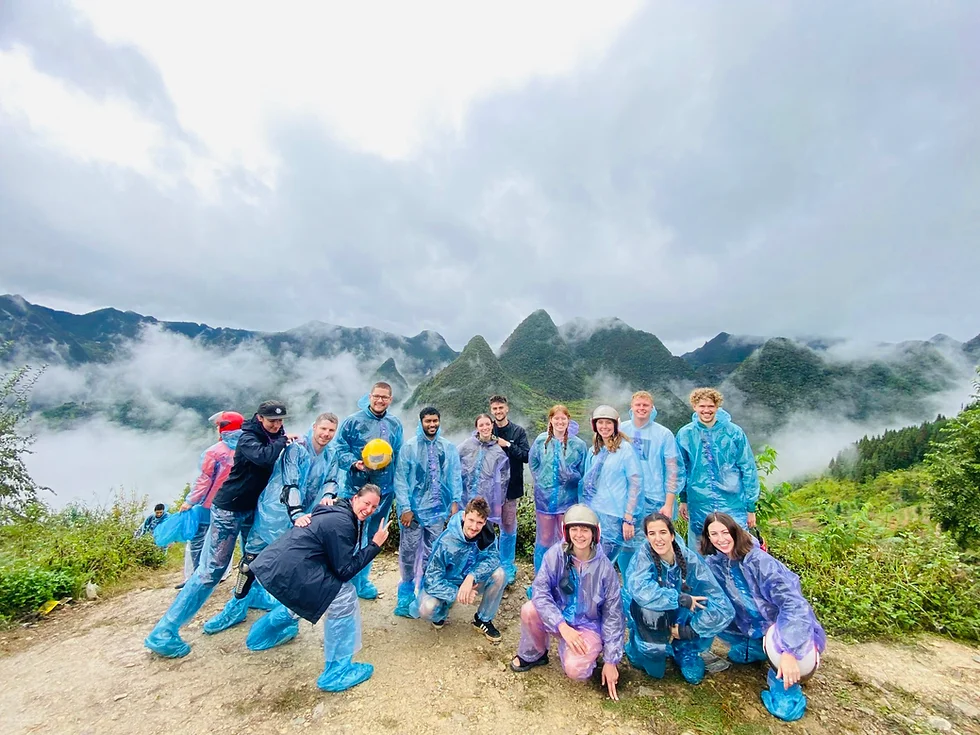
Ha Giang Loop weather in Summer brings sudden showers and hot and humid climate to the mountainous areas
Ha Giang Loop weather in Summer features lush green nature but also comes with high humidity. From June to August, temperatures typically range from 25-35°C, with June often being the hottest month, reaching up to 36°C. Summer is also a period of heavy rains, which sometimes affects tourism.
Despite the sweltering heat and sometimes sudden showers, summer in Ha Giang still attracts many tourists because of the fresh natural scenery of the mountains and forests. Lush green fields, cool clear streams, and majestic waterfalls create a poetic scene. However, please pay attention to natural phenomena such as floods, especially in July and August, to have a reasonable travel plan.
Advantage
- Lush green scenery: Nature in summer is very attractive, the scenery is vibrant with lush trees.
- Waterfall: Ideal place to rest around streams and waterfalls, helping you cool off.
Disadvantages
- Extreme weather: With heat and high humidity that can make travelers uncomfortable, heavy rain can affect your travel plans.
- Flood risk: Need to monitor the weather to avoid unpredictable situations.
Tips
- Prepare sunscreen: With high temperatures and strong sunlight, don’t forget sunscreen and a wide-brimmed hat.
- Rainproof gear: Bring a raincoat, waterproof clothes, and shoes to be ready to face unexpected thunderstorms.
- Make a backup plan: In case you have to extend your stay, change transportation tickets, or cancel sightseeing tickets due to the effects of storms
2.3 Autumn (September to November)
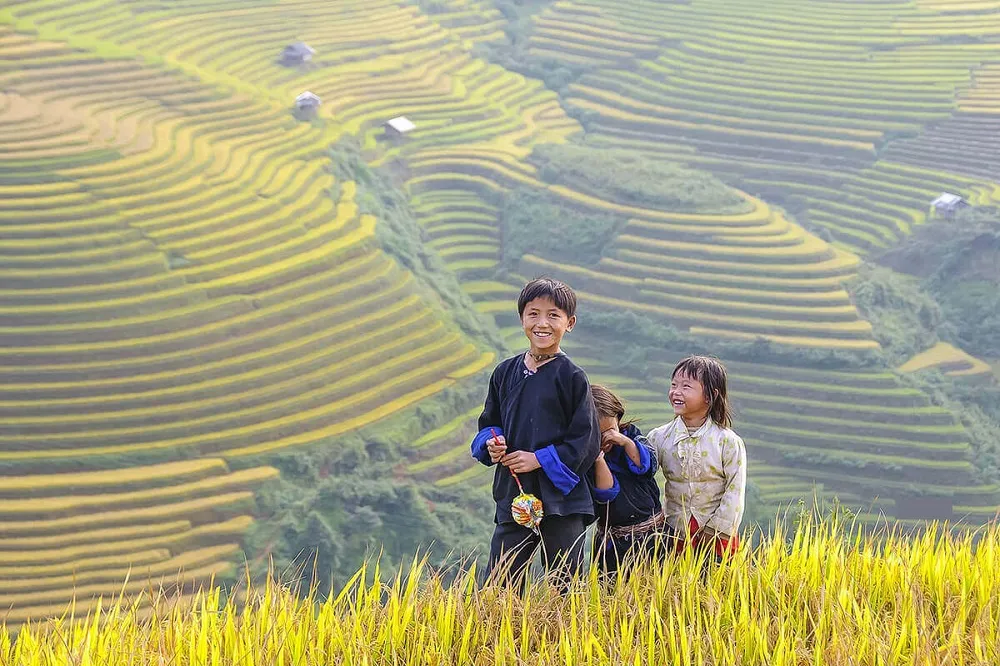
Shiny golden ripe rice plants cover the entire field, creating a rustic, rustic, peaceful scene
Autumn is the best time to visit Ha Giang. From September to November, the weather becomes cool and very pleasant. The average temperature is about 20-30°C, ideal for trekking trips. In September, it is the golden rice season in Ha Giang, a golden color covering the terraced fields along with the sweet smell of ripe rice will bring visitors a feeling of simplicity and peace. October is the time when buckwheat flowers bloom. The colors blend together to create a beautiful picture, attracting many tourists.
This is also the time when many unique cultural festivals of ethnic minorities in Ha Giang take place, bringing a rich experience to visitors. The fresh air and scenery blend together to create a feeling of relaxation, making autumn in Ha Giang an unforgettable experience for anyone who has ever set foot here.
Advantage
- Beautiful scenery: Golden ripe rice and blooming buckwheat flowers, create a beautiful romantic scene.
- Ideal weather: The Ha Giang Loop weather in Autumn is cool and pleasant, very suitable for outdoor activities.
Disadvantages
- Crowded tourists: This is peak time for tourism, and may experience crowding at popular attractions.
Tips
- Plan early: Book accommodation in advance and schedule visits to beautiful spots.
- Use a camera: Don’t forget to bring a camera to capture beautiful moments in the golden fields.
- Prepare jackets and warm clothes because Ha Giang Loop weather in October is quite cold at night.
2.4 Winter (December to February)

Ha Giang Loop weather in Winter becomes cold, frost covers the mountain peaks
Ha Giang Loop weather in winter brings a cold and magical atmosphere. From December to February, the temperature drops, possibly falling below 0°C in high mountain areas. At this time, Ha Giang appears hazy mist, creating a mysterious curtain for the landscape. At night, the temperature can drop to only 5-15°C, requiring visitors to be well-prepared to deal with cold weather.
Although Ha Giang in winter is not as bright and colorful as in other seasons, it is quiet, mysterious, and attractive to tourists. The picture of Ha Giang in winter has flowers blooming, clouds filling the sky and white snow falling. Traveling to Ha Giang in winter will enjoy the peaceful space at Ha Giang.
3. Best time to visit Ha Giang Loop
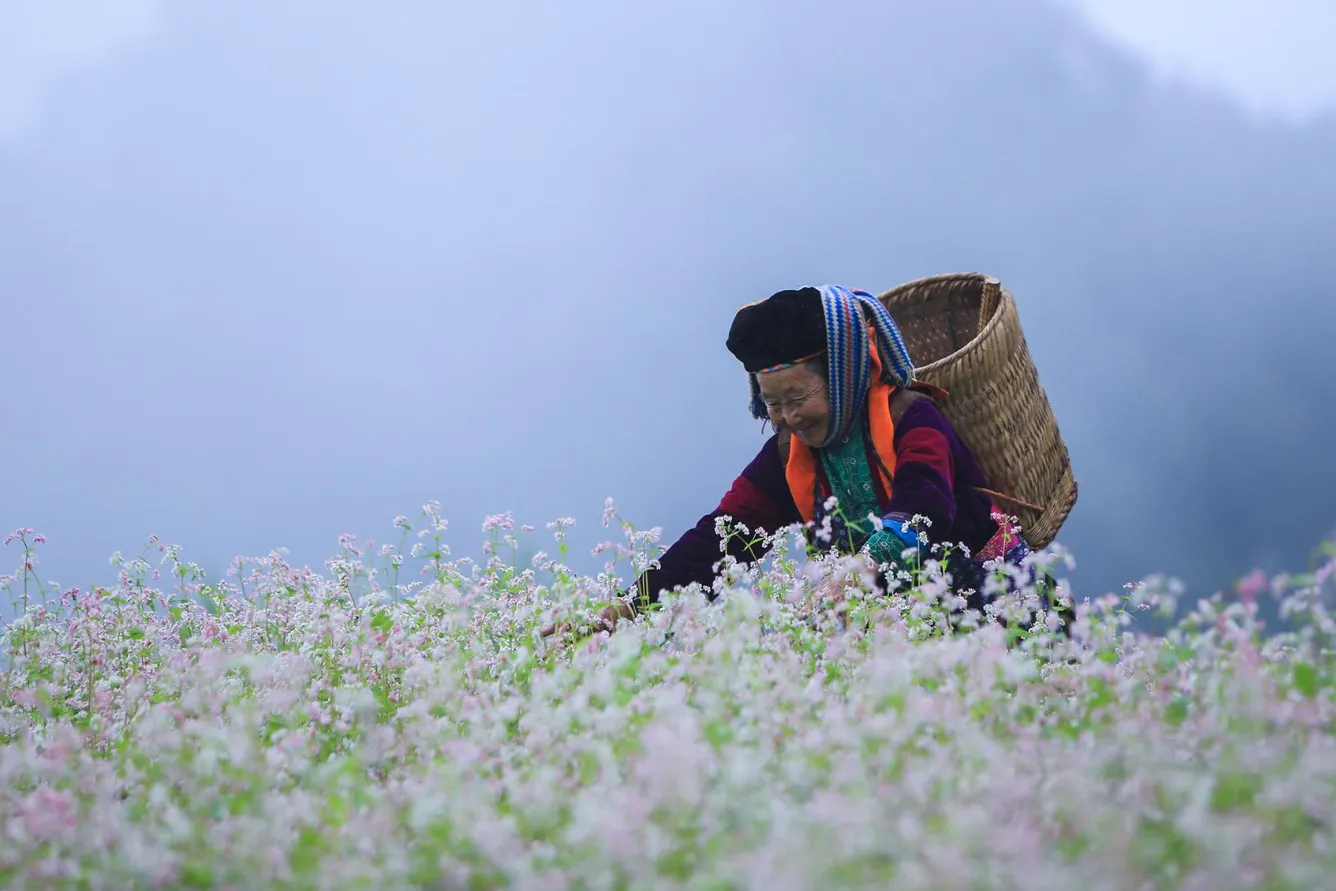
Flower fields cover the mountainsides and valleys, creating a colorful natural picture
The best time to visit Ha Giang Loop is from September and October. This is the period when the rice fields begin to turn shiny yellow and buckwheat flowers bloom, creating wonderful natural scenery. These types of flowers not only make Ha Giang more attractive but also create conditions for photography enthusiasts looking for impressive artistic photos.
In addition, the Ha Giang Loop weather from February to March is also the ideal time with gentle sunlight, low humidity, and large blooming flowers, especially peach blossoms and pear blossoms, bringing a poetic atmosphere to Ha Giang city. Cultural parties and local festivals are also held at this time, bringing more interesting experiences to visitors.
4. Tips for riding a motorbike on Ha Giang Loop
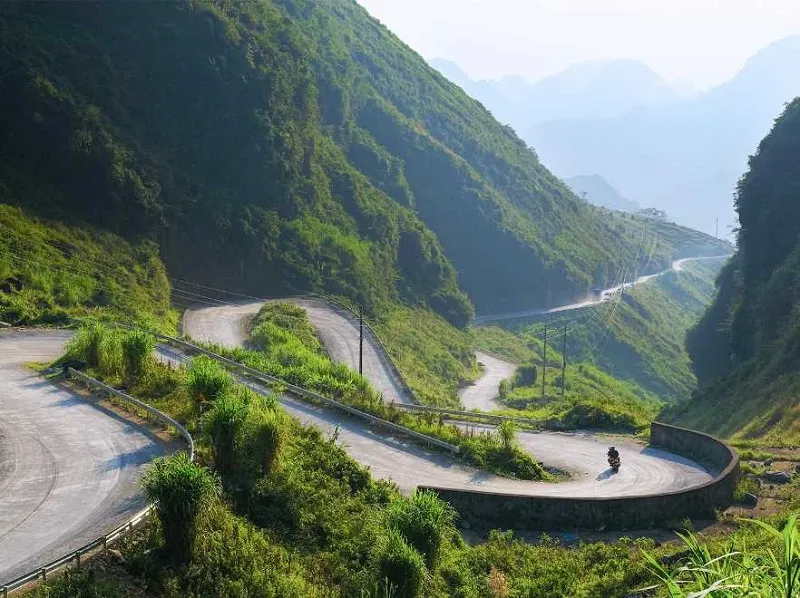
Some notes you need to know when exploring Ha Giang loop
A motorbike trip on the Ha Giang is a great experience, but understanding the Ha Giang Loop weather conditions will help you have safer and more enjoyable trips. When touring by motorbike, it is very important to monitor the weather, because the climate here can be changed quickly. Some tips to keep in mind when cycling in Ha Giang:
- Note the terrain: The roads in Ha Giang have many steep and winding passes, so you need to be careful when moving, especially during the rainy season.
- Check the vehicle: Before each trip, check the vehicle’s condition, making sure the brakes and tires are working properly.
- Bring medical supplies: Don’t forget to bring a first aid kit, so you can deal with unexpected situations. Limit drinking alcohol and beer while driving, especially at night because the terrain in Ha Giang is relatively dangerous.
- Respect the local people, ask permission before entering the house, or ask permission if you want to take photos with them.
- Travel schedule and map: Before the trip, you should prepare a Ha Giang backpacking map and make a clear and detailed schedule to be more proactive in every travel route. Equipped with protective clothing and equipment
- Medical supplies: Insect bite repellent, bandages, sterile medical gauze, medical cotton, painkillers, etc.
Always make sure you are fully prepared with clothing and equipment suitable for each season and all weather conditions of Ha Giang Loop.
Ha Giang is not only attractive because of its beautiful natural scenery but also because of the typical climate of each season. The Ha Giang Loop weather in Each season brings its own unique beauty. Therefore, knowing information about the weather of each season will help you best prepare for your trip. For more information and travel tips, please visit the Karst Plateau website.



